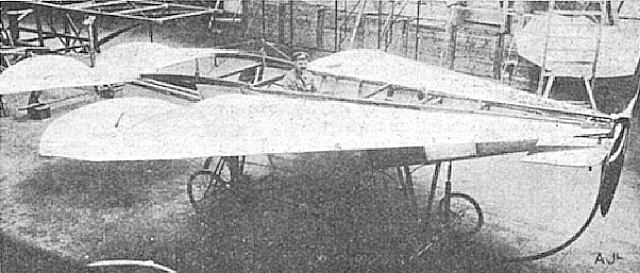Other than the post title I can't say that I have anything interesting to report so I'm just going to post a few pictures wrapping up the build of the
Here I'm riveting the outboard nose skin onto the left flaperon. The outboard nose skin is the one that covers and attaches to the counterbalance pipe. Without the counterbalance you can imagine the flaperons flapping around in bumpy air with some highly undesireable results such as aileron flutter. The hole is where the hinge bracket attaches to a threaded bearing rod.
Peeling back just enough enough to uncover the rivet holes, I left as much of the blue plastic on as I could to protect the skins during their long stay in storage (VSB, remember). I'll check on them from time to time to make sure the adhesive doesn't start to harden, which happens when exposed to a lot of UV light. RV builders who've let that happen regret not removing the blue plastic sooner but so far it still peels off easily.
And this is me finishing the last few rivets in right wing flaperon.
As happened many times before, often a pop-rivet didn't want to go in the hole. If holes in the skin and the underlying rib (or bracket, as the case may be) are mis-aligned by a hundredth of an inch it can cause the rivet to not go in. Because of small indentations on the rivet, I discovered that by turning the rivet 90 degrees sometimes that will be enough to slip the rivet in. If that doesn't work, try 180 and 270. If that doesn't work more aggressive measures (such as reaming out the hole) may be necessary, but usually not. I had to use the awl or #30 fluted reamer on just a few holes on each flaperon. Most of the time just putting a new cleco (as opposed to a worn cleco. I have, and use, both, depending on the situation) in the hole and then removing it would get the holes sufficiently aligned for a rivet to go in - it helps to have both (old and new) on hand.
Finally I pulled down the 15-foot main spar for the right wing with assistance from neighbor Mike and put the finished flaperons away for storage. Now looking forward to starting the right wing skeleton followed by the landing light installation. Because of the need to cut a rectangular hole in the outboard nose skin and then trim and flush-fit a plexi (Lexan™) lense, the landing light installation may be the hardest challenge yet.





So how do you go about balancing it once it's painted? Do you add weights on the front or is there some special method?
ReplyDeleteNicholas
Thanks for asking. In addition to adding some structural rigidity, the chrome steel pipe inside the outboard end of the flaperon serves as the counterbalance weight for the whole flaperon. I doubt that it's perfectly balanced to the nearest gram, but it probably doesn't need to be. I've not heard about the weight of an airplane paint job affecting the balance of the flaperons. I guess if it was really bad you could add some lead weights inside the steel pipe.
Delete